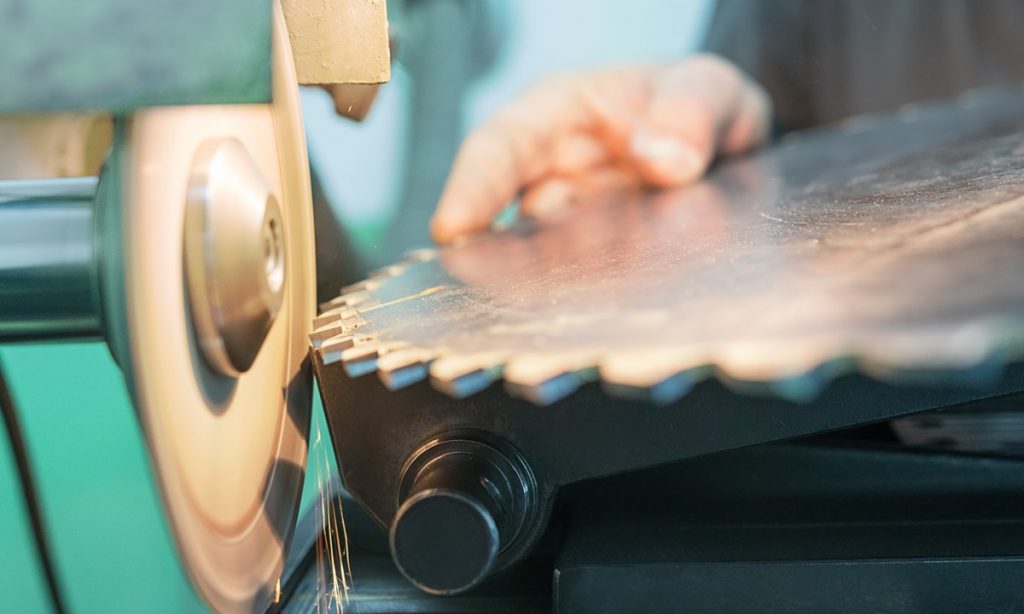Can I Sharpen My Own Saw Blade?

Whether you’re a professional sawyer or a hobbyist, accuracy is important when cutting with a saw blade. And a fine one is essential for professional cuts. In this article, we’ll look at whether you should sharpen your saw blade on your own or replace it with a new one instead. We’ll also look at how you can sharpen a saw blade if you decide on the former option. So, without further ado, let’s dive right in!
Should You Sharpen Your Own Saw Blade?
The condition of your saw blade will decide if it should be replaced or resharpened. On average, you can sharpen a fine quality blade 3-4 times, before finally replacing it with a new one.
If your existing saw blade is not seriously damaged, sharpening it may be a good way to go as it’s cost-effective yet practical. But if your blade is suffering from serious damage, then it should be replaced.
So, should you sharpen your saw blade on your own? Well, unless you’re an expert at operating a knife sharpener and other sharpening equipment, asking a professional for help is a good way to go. You see, saw blades contain a lot of teeth leaned in a certain direction for maximum efficiency during cutting. Only professionals know the right way to sharpen them without compromising their teeth characteristics.
Does Your Saw Blade Need To Be Sharpened or Replaced?
To find out if your saw blade can be used for professional cutting, requires sharpening or a replacement, look out for the following indications:
- Some teeth of your saw blade are chipped or missing
- The blade wobbles and doesn’t provide precise cutting
- Your saw blade is surrounded by tar or resin and similar materials
- The saw doesn’t cut as fast as it used to
- There’s smoke coming out of wood during chopping
- It’s harder to push the saw blade through wood than it was when the blade was new
If your blade matches some of these indications, it’s time to replace or sharpen your blade depending on the intensity of the damage.
How To Sharpen a Saw Blade
Different saw blades are sharpened in different ways, depending upon their blade design and teeth structure. The saw blade sharpeners used are also different. But in most cases, electric saw blade sharpeners are used for professional sharpening of saw blades which involves the following steps:
First of all, get a saw blade sharpener. It can be a diamond saw blade that would allow for sharpening your existing blade or a regular knife sharpener. Before starting the sharpening procedure, consider wearing safety goggles, a pair of gloves, safety earmuffs and a dust mask respirator.
Start by removing your saw blade from its frame to secure its movement and avoid any damage. More often than not, there’s a switch on the saw frame to detach the blade. Now, set the electric saw blade sharpener on a stable surface and secure the damaged saw blade in the given location. Align each tooth of the blade with the sharpener one by one. If required, sharpen your saw blade in two passes for both directions.
Next, fill the teeth of your saw blade one by one while making sure your blade’s inner edge aligns with the electric sharpener’s blade. Once the process is complete, detach your blade and properly clean it. Now, attach it to the saw frame and that’s it — your sharpened saw blade is ready for use.
Final Words
Sharpening your own saw blade may or may not be a good idea, depending upon its condition. If your blade has slightly malfunctioned teeth, sharpening it is a good way to go. But if it has encountered severe damage, replacing the blade is a better way around. Anyway, we recommend using high-quality saw blades and replacing a blade after sharpening it 3-4 times. This is especially important if you’re a professional sawyer.
